Blood Vessels
Your body's blood is transported throughout the body through blood vessels. Blood is carried to all the tissues through veins, arteries and capillaries. These constitute the blood vessels. They also help in removing the waste products and supply necessary oxygen to cells and organs.
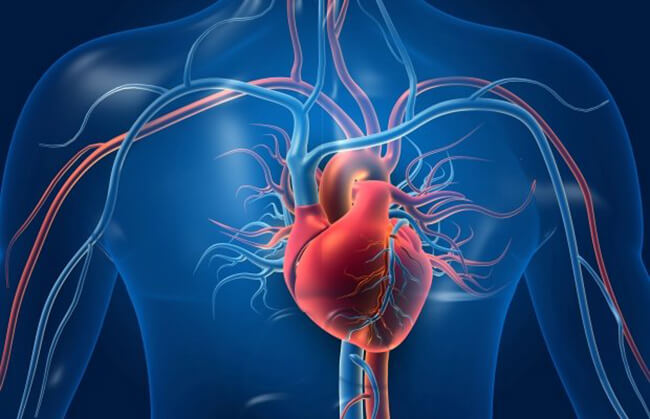
Functions of Blood Vessels
Your body's blood travels through blood arteries, which act as conduits. The arteries are present throughout the body and make a closed loop system that only starts and ends at the heart. Heart vessels and blood vessels together make up the circulatory system. The human body has approximately 60,000 miles of arteries.
Types of blood vessels present in the body:
- Arteries: transport blood from the heart to different organs.
- Veins: to return the blood from organs to the heart.
- Capillaries are tiny and help circulate blood throughout the body by linking arteries and veins.
Circulation of Blood in the Body
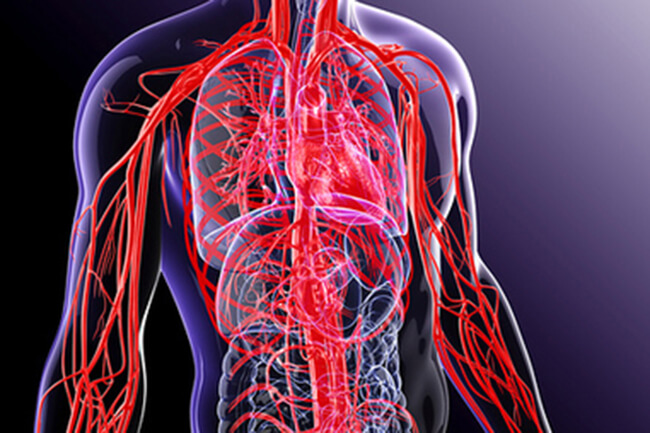
Here is how blood circulates throughout your body:
- Blood enters the right side of the heart through veins.
- The blood is transported to your lungs through pulmonary arteries, where it obtains oxygen.
- Pulmonary veins are responsible for transporting oxygen-rich blood to the left side of the heart.
- From this left side, blood is transported to the rest of the body with the help of the aorta. Aorta is the major artery in the body. Arteries are responsible for transporting blood to the body tissues.
- Capillaries help transport substances like nutrients, oxygen, Co2 and waste material to the tissues and away from them. They are very narrow channels; therefore, blood flows through the tissue cells through their thin walls.
- Once again, the procedure starts when veins return the blood to your heart.
Functions of Blood Vessels
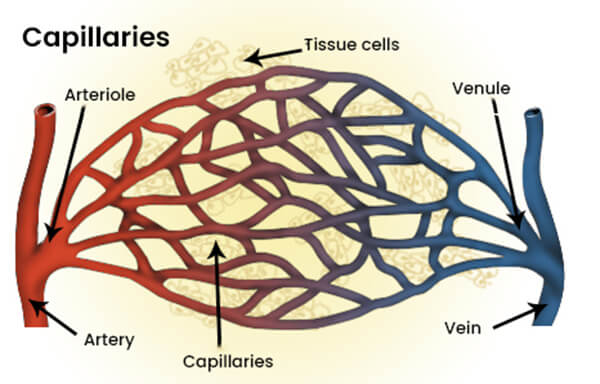
Blood delivery to your body's organs and tissues is the role of blood vessels. All the organs and tissues require a proper amount of oxygen and nutrients for proper functioning. This transport of substances is carried out by blood vessels. Additionally, blood vessels remove waste and carbon dioxide from your organs and tissues.
Different Blood Vessel Perform Various Tasks
- Arteries: Your body receives oxygen-rich blood from your heart through these robust, muscular blood veins. They do not transport much blood, but they can bear much stress and pressure from your blood flow. Only 10 to 15 per cent of the blood in your body is present in your arteries.
- Arteries divide into very small arteries called arterioles. The flexibility of arteries and arterioles is quite high. To support and manage your body's blood pressure, they enlarge or contract.
- Capillaries: The walls of these small blood arteries are very thin. The walls of organs and tissue take in nutrients and oxygen through absorption. Additionally, the capillaries remove waste from your tissues. Tissues take in oxygen and nutrients, and in turn, they release toxic substances, waste material and carbon dioxide.
- Veins start as little veins called venules and progressively get bigger as they go closer to the heart. Capillaries deliver blood to venules.
- Veins: Unlike arteries, veins do not need to transport blood under high pressure, but they do need to transport significant amounts of deoxygenated blood back to your heart. They can manage huge volumes and low-pressure thanks to their thin, less elastic walls. The majority of veins have reversible valves. The valves regulate blood flow and maintain a single path of blood flow in your body. Your veins hold around 75% of your blood.
Position of Blood Vessels in the Human Body
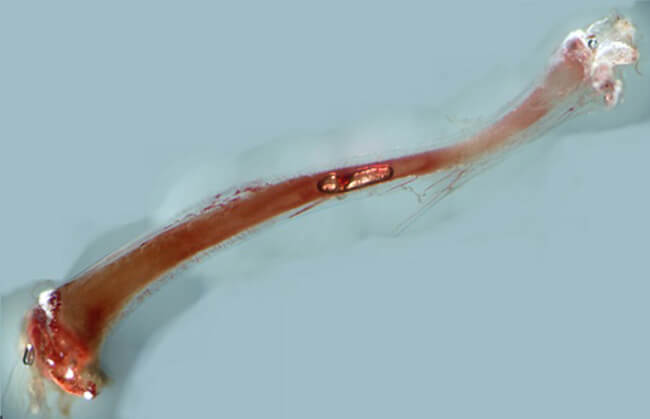
Your body contains blood vessels all everywhere. The primary artery is the one that directly joins the left side of the heart, and it is called the aorta. Your aorta divides into two arteries that carry blood to your lower body close to your pelvis. It branches off to several places as it descends through your chest, diaphragm, and belly.
The vena cava is your body's main vein. It helps in removing waste from different tissues of the body and transporting the deoxygenated blood back to the heart. Your upper right chest area contains the superior vena cava.
Appearance of Blood Vessels
Although blood arteries have a tube-like structure, they do not always flow straight. There are veins on the inside of your arm that you may have observed while giving blood for the blood tests. Some of them are large enough to see through your skin. Even though your blood is red, it may seem blue under your skin.
The Size of Blood Vessels
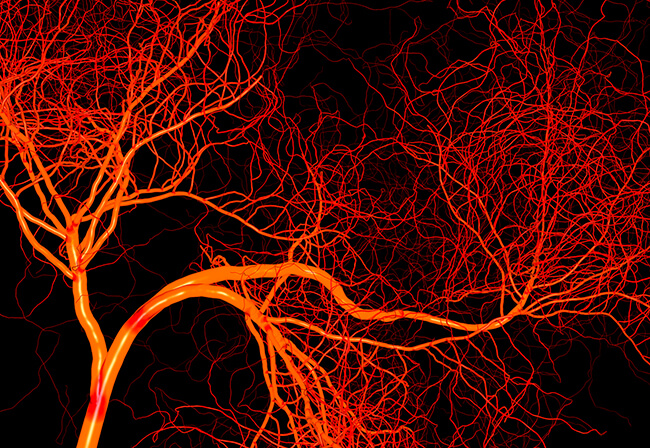
Some have a large diameter, such as the aorta. For instance, the aorta in the belly is typically 2 cm broad (about the nickel size). However, certain blood arteries, like capillaries, are quite tiny. They have a diameter between 2 to 12 micrometres, even smaller than a human hair.
What materials make up the blood vessels?
Three layers of tissue make up blood vessels:
- The inner layer, or tunica intima, protects the blood as it circulates throughout your body. It maintains healthy blood circulation. It keeps toxic substances out of your circulation, controls blood pressure, and avoids blood clots.
- Media: Elastic fibres in the intermediate layer keep your blood flowing in one way. The media helps in the expansion and contraction of vessels.
- Nerves and small arteries are found in the outer layer of the adventitia. It helps eliminate waste while supplying your cells with nutrients and oxygen from your blood. It also provides the framework and support for blood vessels.
Diseases and Injuries Affecting Blood Vessels

Your blood vessels may be impacted by a variety of issues, including:
- An aneurysm is a protrusion in an artery that is weak or injured. Anywhere in your body can develop an aneurysm. They may cause fatal internal bleeding if they burst (break open).
- Coronary artery disease, carotid artery disease, and peripheral artery disease are examples of arterial diseases (PAD). Atherosclerosis is often the source of these disorders' ability to constrict arteries.
- Plaque (made of cholesterol, fat, and other chemicals) accumulating inside your arteries causes atherosclerosis. This causes a heart attack or stroke.
- Within arteries and veins, sometimes blood gets thick and starts clotting. This clotting of blood in veins results in harming the flow of blood and obstructing it and hence causing deep vein thrombosis, stroke, arterial blockage, and pulmonary embolism
- When there is too much pressure exerted against the artery walls, it results in high blood pressure, often known as hypertension.
- Due to Raynaud's illness, your skin's blood vessels become extremely constricted in the cold weather.
- Varicose veins, also known as twisted and swollen veins, typically develop in the feet or legs.
- Improper connections or groupings of blood vessels are called vascular malformations. Arteriovenous malformations, for example, are often congenital conditions (present at birth).
- Vasculitis, or inflammation of blood vessels. Blood artery walls can thicken and constrict, restricting blood flow.
How Common Are Diseases of the Blood Vessels?
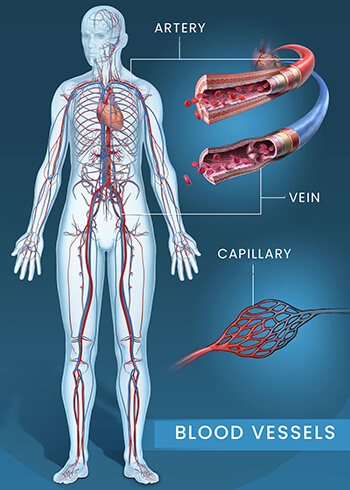
Some blood vessel conditions are highly prevalent. For instance, high blood pressure affects the majority of the population. Others, like vascular abnormalities, are uncommon. This condition affects less than 1% of the population.
Who is Prone to Blood Vessels Disorders?
Your chance of developing the vascular disease rises if you:
- Are above 65 years old.
- Are overweight or obese.
- Have excessive cholesterol or diabetes.
- Smoke.
- Do not work out.
- Possess a disease that affects your blood vessels.
Signs and Symptoms of Problems Associated with Blood Vessels
The symptoms of various blood vessel problems vary greatly from one another. Some conditions, such as aneurysms or vascular abnormalities, can not show signs until a major issue arises.
If a person suffers any of the following difficulties, he is strictly advised to consult doctors as soon as possible.
- Change in the skin colour like the blue tone
- Numbness of the feet, hands, legs and arms.
- Completing physical tasks with difficulty.
- Fatigue.
- Pain in your arms, legs, abdomen, chest, or back.
- Respiration difficulty.
How are blood vessel conditions identified?

To identify issues with your blood vessels, your doctor may do several tests, including:
- Electrocardiography
- Ultrasound
- Echocardiography
- Stress test with exercise
- CT scan
- MRI
- Angiography
- Catheterization of the heart
- Table tilt test
Treatment of Blood Vessels' Disorders
Among the possible therapies for blood vessel issues are:
- Lifestyle changes: By quitting smoking, drinking less alcohol, maintaining a healthy weight, and avoiding junk food, you can lower your chance of blood vessel problems.
- Medicine: Some people require medication to control their blood pressure, lower their cholesterol, or lessen their risk of blood clots.
- There are various problems associated with blood vessels for which doctors recommend nonsurgical therapies. Blood clots, aneurysms, and severely constricting blood arteries can all be treated using interventional treatments. In these minimally invasive treatments, catheters-thin, flexible tubes-are guided to your blood vessels using imaging. This indicates that significant open surgery is not required.
- Surgery: If your blood vessel issue does not get better with medicine or other nonsurgical therapies, you could require open surgery. An incision or cut is made in the artery or vein during the open surgery to reach any blood artery. A hospital stay and general anaesthesia are typically required for open surgery.
How Can I Maintain the Health of my Blood Vessels?
You may improve the condition of your blood vessels in several ways, including:
- Consume a nutritious, balanced diet reduced in saturated fats, cholesterol, and salt.
- Regular exercise
- Manage your blood pressure.
- Give up smoking
- Reduce your alcohol intake
Conclusion
Your body's blood is transported throughout the blood arteries by your heart. They are necessary to ensure that your organs and tissues receive the oxygen and nutrients required to function. However, blood vessels might experience issues, including obstructions or hypertrophy. Life-threatening blood vessel problems can occur. However, by leading a healthy lifestyle, you can manage and maintain the health of your blood vessels.
|








 For Videos Join Our Youtube Channel: Join Now
For Videos Join Our Youtube Channel: Join Now









